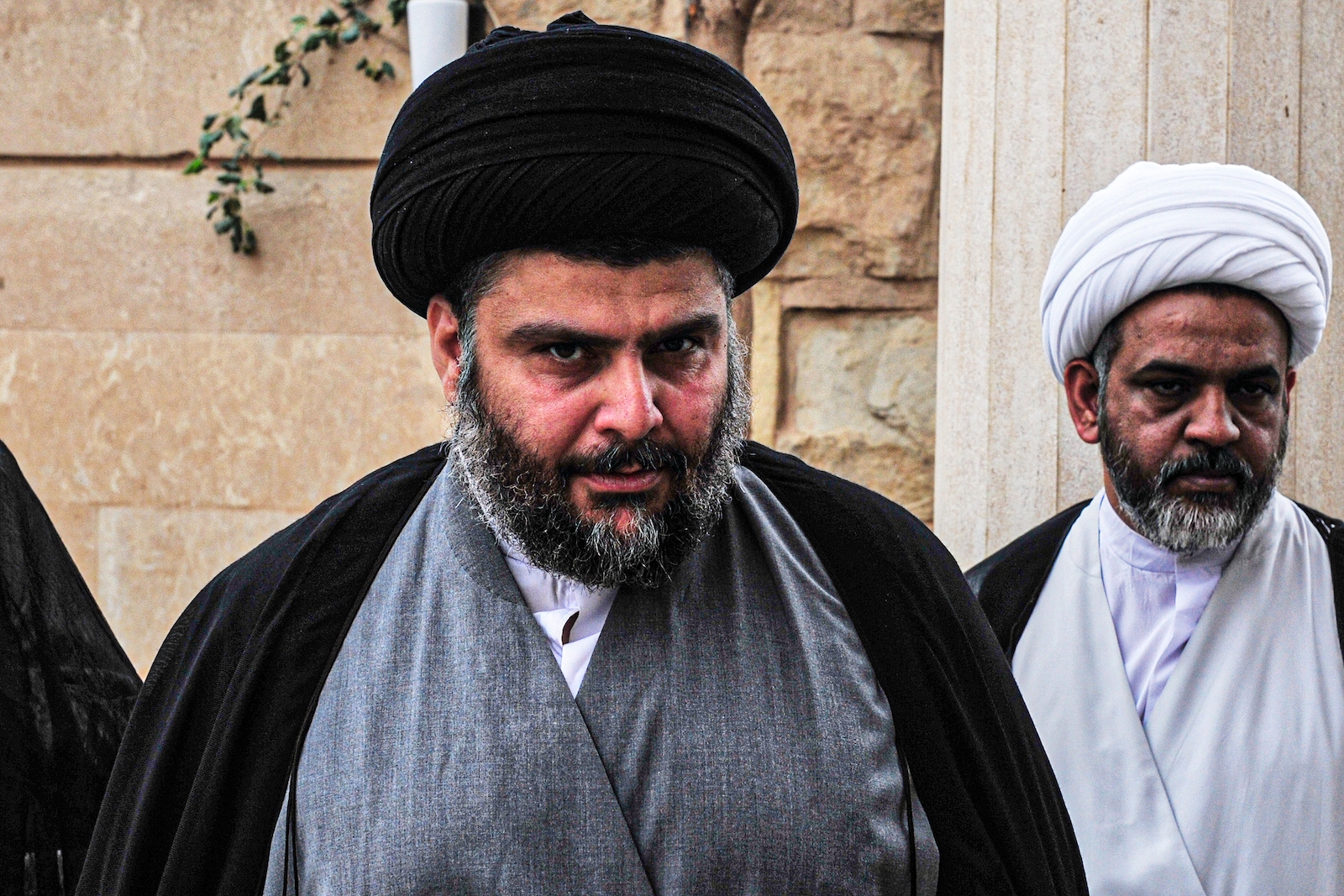
Sadr’s Political Maneuvering Just Compounds Iraq’s Problems
In the years that followed the fall of Saddam Hussein’s regime in 2003, the new political system in Iraq faced several challenges. From the occupation and its manipulation of the political process, in addition to the Sunni boycott, the Kurdish attempt to separate under the facade of the referendum, and the war against the Islamic State, Iraq has escaped many existential threats, but it is now facing a new threat.
From 2019 to 2021, protests broke out throughout Iraq. The protestors were demonstrating against severe unemployment, corruption, sectarianism, and a lack of public services. The demonstrators had a clear message that the political process is just a market for profit. The government, backed by Iranian-backed militias, used overwhelming force on the protestors.
The quest to form a majority government, which is nothing but a government of exclusion, has led to a division between the two main poles within the Shiite house. The ongoing debate has prevented the formation of a government after parliamentary elections in October 2021, which were supposed to bring the country out of the politcal deadlock.
The risk is once again that Iraqis will take to the streets. These are the two main issues from which neither the Sadrist Movement nor the two parties of the tripartite alliance, the Kurdistan Democratic Party and the Sovereignty Coalition, can distance themselves.
Since the elections last October, and despite all the efforts to rig the election system, no party has been able to obtain an absolute majority in parliament. The past eight months has left Iraq stuck in a political impasse whose planners bet on finding a second split, this time within the coordination framework, after they succeeded in forming two poles: the Sadrist Movement and the coordination framework.
Since the results were settled, the tripartite framework went to form a government after the election of the president, which can only pass with the approval of the framework or part of it, thus confirming hegemony – and removing the framework based on an artificial conflict between the parish of the Sadrist Movement, Muqtada al-Sadr, and Nouri al-Maliki, the former prime minister.
Al-Sadr tried to frame what he called the “national majority government” as an attempt to establish himself as a representative of the Shiites in power, allying with the Kurdistan Democratic Party and the coalition of sovereignty that was announced in Turkey with regional support. Al-Sadr rejected the Shiite consensus that included all political parties and the forces that won the elections, and instead wanted to force other Shiite parties to turn to the fragile and senseless opposition amid an unusual dominance of parliament committees. But this tripartite alliance lacked the two-thirds majority required to elect the president, who then appoints the prime minister, and thus the failure of the policy of “get me to power to remove you from it.”
To break the deadlock, al-Sadr ordered his parliamentarians to resign. This move allowed him to blame others for the delay in the formation of the government. It also allowed him to hold the political parties responsible for past failures, including his allies, who are not believed to be committed enough to the majority government and tried to jump ship before it sank in the initiative that the KDP leader Masoud Barzani was preparing to launch in coordination with Khamis al-Khanjar and Muhammad al-Halbousi.
By having his deputies resign during the parliamentary recess, al-Sadr believes that he is protecting himself from any possible backlash from potential summer demonstrations. In fact, he was trying to absorb potential demonstrations and use them as a tool to pressure the framework. Even before the October elections, al-Sadr threatened not to support any government formed without his involvement.
This is a battle for control and domination and has nothing to do with reform.
While think tanks and the West try to view these developments as a conflict between two axes: one pro-Western and the other pro-Iranian, the reality confirms that the competing parties overlap in their ideological tendencies. Both sides have long – if sometimes bumpy – relations with Iran and the West.
When examining the current political situation, Iraqi policymakers need to recognise that an important shift has occurred. Although the political system no longer faces existential crises, the political conflict between the Shiites risks creating a new form of crisis. In this conflict, al-Sadr may think of moving the fight from the parliament to the street, but he must realise that entering and exiting the political process considering the sacrifices that were made on the way there, is one of the peculiarities of the supreme interest of the larger societal component.
In this environment of simmering public discontent, the coordinating framework forces need to quickly lean themselves toward voters and frustrated Iraqis as a whole. The political system may have withstood challenges since 2003, but the current public dissatisfaction, if manifested through directed protest, could create a new existential crisis.
A fox is not taken twice in the same snare.

